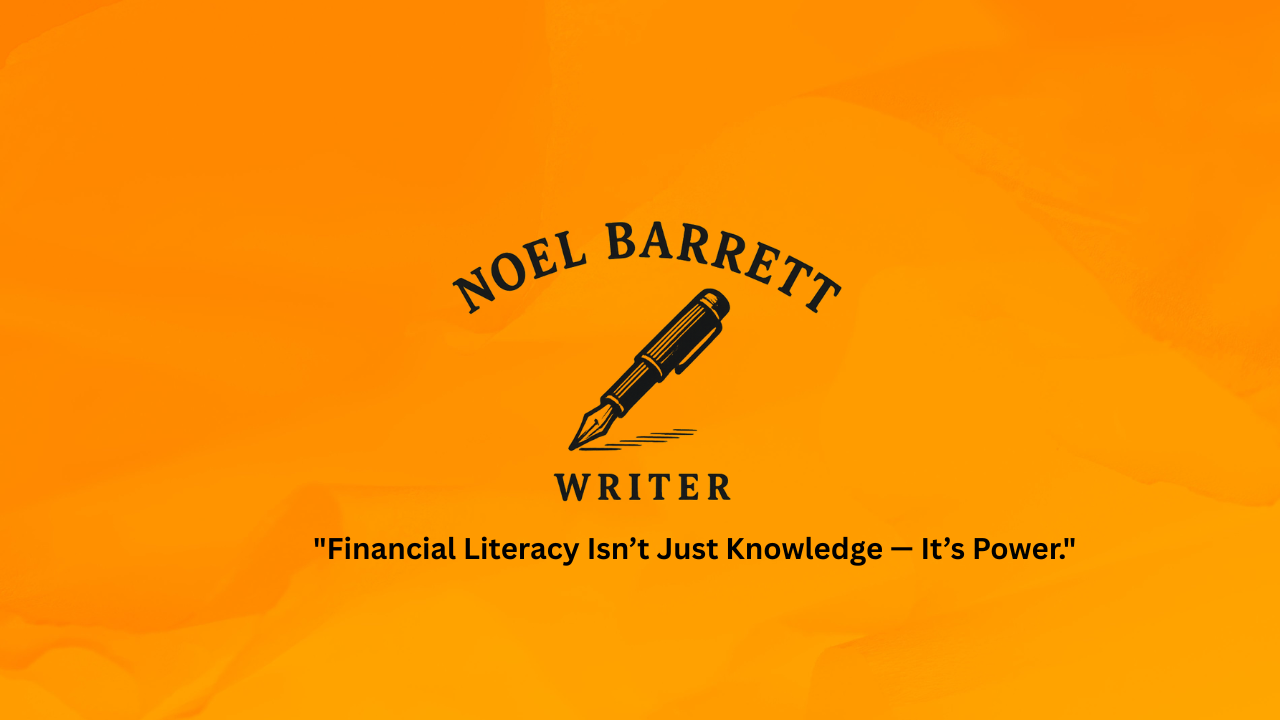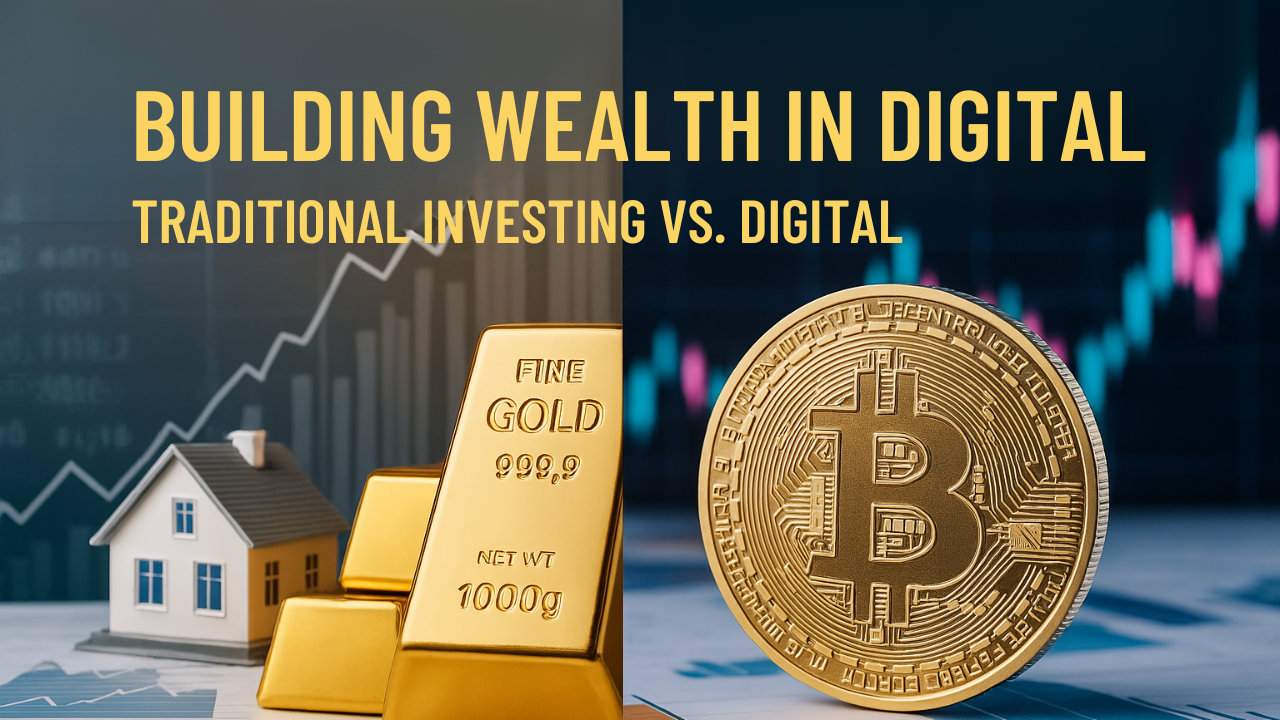Introduction
The 21st-century investor faces an exciting yet complex financial landscape. While traditional investment vehicles like stocks, bonds, and real estate remain the cornerstone of many portfolios, digital assets such as cryptocurrencies, non-fungible tokens (NFTs), and tokenized securities are reshaping how we think about wealth generation.
In this blog, we dive into the key characteristics, benefits, and risks of both traditional and digital assets, explore how they fit into modern portfolio strategies, and exam
Understanding the Asset Classes
1. Traditional Investments
a. Stocks
- Represent ownership in a company.
- Offer dividends and capital appreciation. Highly liquid, traded on exchanges like NYSE and NASDAQ.
b. Bonds
- Fixed-income instruments.
- Lend money to governments or corporations for periodic interest payments and principal repayment.
- Considered lower risk, ideal for income stability.
c. Real Estate
- Tangible asset offering rental income and long-term appreciation.
- Less liquid than stocks or bonds.
- Provides inflation protection and tax advantages.
2. Digital Assets
a. Cryptocurrencies (e.g., Bitcoin, Ethereum)
- Decentralized digital currencies operating on blockchain technology.
- Highly volatile and speculative.
- Use cases range from digital payments to smart contracts.
b. NFTs (Non-Fungible Tokens)
- Unique digital assets tied to digital or physical content (art, music, gaming items).
- Provide proof of ownership and scarcity.
- Still in early adoption, speculative in nature.
c. Tokenized Securities
- Digital representations of traditional assets (real estate, equities, bonds).
- Enable fractional ownership and increased liquidity.
- Operate under legal and regulatory frameworks.
Pros and Cons of Each Asset Class
Pros of Each Asset Class
Stocks : Proven history of growth, dividend income, liquid markets
Bonds: Steady income, capital preservation, lower volatility
Real Estate: Tangible, steady income, tax benefits
Cryptocurrencies: High growth potential, decentralized, innovation-driven
NFTs: Unique ownership, new creator economy, early-mover advantage
Tokenized Securities: Increased liquidity of traditional assets, fractional ownership
Cons of Each Asset Class
Stocks : Subject to market volatility, macroeconomic risk
Bonds: Lower returns, interest rate risk, inflation erosion
Real Estate: Illiquidity, management hassle, high entry cost
Cryptocurrencies: Extreme volatility, limited regulation, risk of loss
NFTs: Lack of liquidity, speculative, unclear valuation
Tokenized Securities: Regulatory uncertainty, tech reliance
Risk Tolerance and Portfolio Diversification
Assessing Risk Tolerance
Before diving into any asset class, investors must evaluate their risk profile:
- Conservative: Focus on capital preservation and steady income. Prefer bonds and real estate.
- Moderate: Willing to tolerate some market swings for better returns. Include stocks and real estate.
- Aggressive: Seek high returns, tolerate volatility. Embrace crypto and early-stage digital assets.
Diversification Strategy
Combining traditional and digital assets can optimize risk and return:
- Core-Satellite Model:
- Core: Traditional investments (60–80%). Satellite: High-growth digital assets (10–20%).
- Tactical Allocation: Adjust exposure based on market conditions and innovation cycles.
Diversification helps:
- Hedge against inflation (real estate, crypto).
- Smooth out volatility (bonds vs. crypto).
- Capture global trends (emerging markets, Web3 adoption).
Regulatory Outlook
Traditional Investments
- Well-regulated across most jurisdictions.
- Securities and Exchange Commission (SEC), Financial Conduct Authority (FCA), and other bodies govern operations.
- Strong investor protections.
Digital Assets
- Evolving and fragmented regulatory landscape.
- Key issues: classification (security vs. commodity), taxation, anti-money laundering (AML), and consumer protection.
- Some countries (e.g., El Salvador) embrace crypto; others (e.g., China) ban it outright.
- Regulatory clarity, such as SEC guidance or MiCA (EU), will determine mainstream adoption and institutional involvement.
Long-Term Potential and Future Outlook
Traditional Investments
- Remain foundational for retirement planning and institutional portfolios.
- Innovations like ESG investing, robo-advisors, and thematic ETFs enhance access and personalization.
Digital Assets
- High potential for innovation, financial inclusion, and decentralized finance (DeFi).
- NFTs could redefine ownership in art, music, and entertainment.
- Tokenization could democratize access to high-value assets.
Risks include regulatory changes, cybersecurity threats, and market manipulation.
Conclusion: Blending the Old and the New
The future of investing isn’t about choosing either traditional or digital assets—it's about understanding how to integrate both.
Digital assets offer revolutionary opportunities, especially for younger, tech-savvy investors. However, traditional assets provide the time-tested stability and income needed for long-term wealth preservation.
A well-balanced portfolio in the digital age should:
- Reflect personal risk tolerance.
- Embrace innovation without ignoring fundamentals.
- Remain adaptable to regulatory and market shifts.
Final Tips for Investors
1.Educate Yourself: Stay informed on both markets and regulatory trends.
2.Start Small: Especially with digital assets, consider a small percentage of your portfolio.
3.Rebalance Regularly: Adjust allocation as market conditions or personal goals change.
4.Secure Your Assets: Use reputable brokers, hardware wallets for crypto, and multifactor authentication.
5.Seek Professional Advice: A financial advisor can help tailor a portfolio that suits your profile.
Wealth building in the digital age is no longer linear—it’s a dynamic, multi-asset journey. Will you be ready for the future?







